Fighter jets have become the crown jewels of national defense arsenals, symbolizing technological prowess, deterrence, and battlefield dominance. As of 2025, more than 14,000 advanced fighter jets are actively deployed by the world’s leading military powers.
At the heart of this competition are fifth- and sixth-generation fighter jets, equipped with stealth technology, network-centric warfare capabilities, integrated AI systems, and hypersonic weaponry.
The US, which leads the world with a defense budget of over $960 billion (more than the next 10 countries combined), continues to invest heavily in aircraft like the F-35 Lightning II, the most expensive weapons program in history, with a lifetime cost estimated at $1.7 trillion. Plus, New 6th-generation fighter jets, such as the Boeing F-47, are expected to cost more than $300 million each. [1][2]
The Global Combat Air Programme (GCAP), a collaborative effort by the UK, Italy, and Japan, aims to field a sixth-generation fighter by 2035, with development costs estimated in the tens of billions.
In this article, I talk about the best fighter jets in the world, looking at their performance, avionics, armament, stealth capabilities, and battlefield roles.
Did you know?The global military aircraft market is projected to exceed $85 billion by 2032, driven by increasing geopolitical tensions, technological leaps, and a race among nations to gain supremacy in the air. [3]
Table of Contents
15. KF-21 Boramae
Country of Origin: South Korea
Manufacturer: Korea Aerospace Industries
Generation: 4.5 gen
Speed: Mach 1.8
Unit Cost: $65 – $70 million
The KF-21 is South Korea’s first homegrown 4.5-generation multirole stealth fighter, built to lower the country’s reliance on foreign suppliers. It features open mission systems, which make it easier to upgrade, improve software, and customize for export.
The aircraft is equipped with domestically developed Active Electronically Scanned Array radar, Infrared Search and Track, and Electro-Optical Targeting Systems, giving it superior situational awareness and tracking capabilities.
South Korea plans to induct over 120 units into its air force by the mid-2030s, replacing older F-4 Phantom II and F-5 Tiger II fighters. The jet is expected to be a cost-effective alternative to fifth-generation fighters, offering advanced avionics, AESA radar, and stealth features.
14. Mitsubishi F-X
Country of Origin: Japan
Manufacturer: Mitsubishi Heavy Industries
Generation: 6th gen strategic stealth bomber
Speed: Mach 2
Unit Cost: $177 million
Mitsubishi F-X is Japan’s ambitious sixth-generation fighter jet currently under development to replace the aging Mitsubishi F-2 fleet by the mid-2030s. It aims to blend stealth, supercruise, advanced sensor fusion, and AI-assisted systems. [4]
The F-X will feature multi-spectral stealth technologies, such as radar-absorbent composite skin, embedded sensors, and conformal weapon bays, providing superior stealth over 5th-gen jets like the F-22 or Su-57.
Advanced AI systems will assist pilots with real-time data fusion, decision-making, and sensor interpretation. It may also include quantum radar research for stealth detection.
The project represents a monumental leap in Japan’s aerospace defense industry, with total development costs projected to exceed $45 billion.
13. Northrop B-2 Spirit
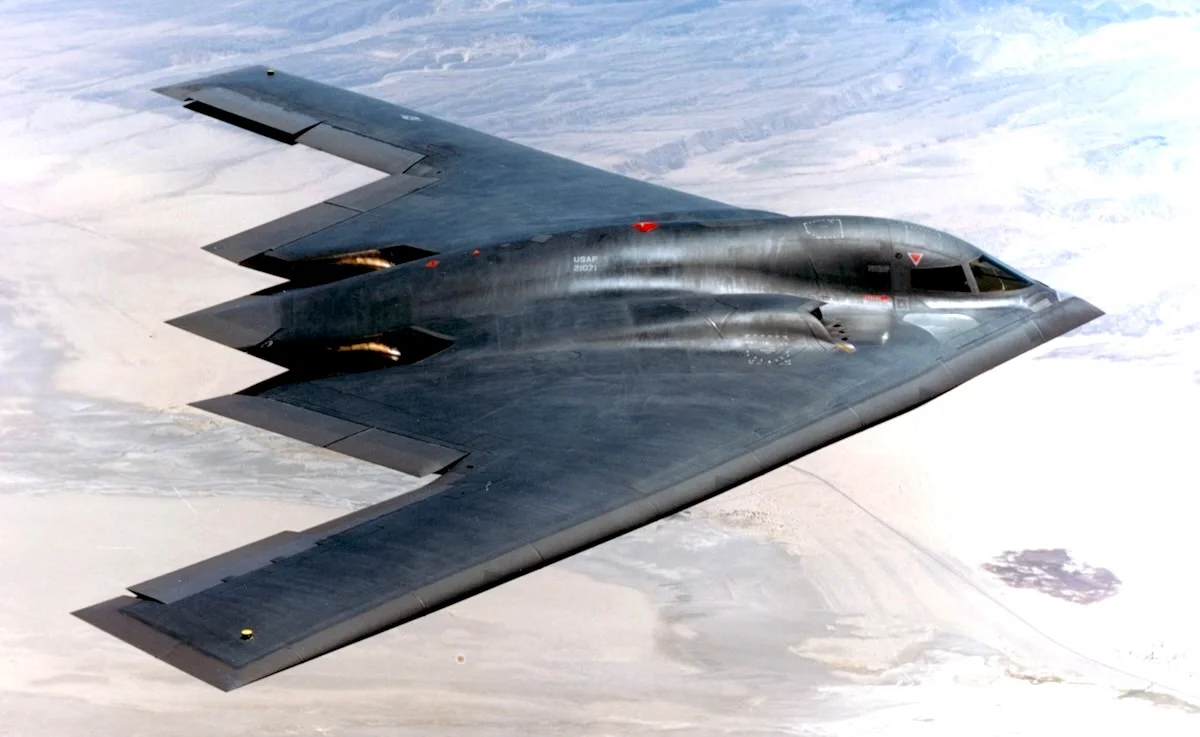
Country of Origin: United States
Manufacturer: Northrop Grumman
Introduced in: 1997
Generation: 5th gen strategic stealth bomber
Speed: Mach 0.95
Unit Cost: $4 billion (as of today)
The Northrop B-2 Spirit is one of the most iconic and advanced military aircraft ever built, representing the pinnacle of stealth technology and strategic bombing capability. It can penetrate sophisticated enemy defenses to deliver both conventional and nuclear payloads.
It was the world’s first true stealth strategic bomber, known for its unique flying wing shape, radar-absorbing materials, and low visibility technologies. It’s designed to avoid detection by radar, infrared sensors, sound, and even the human eye.
The B-2 can fly more than 6,800 miles without refueling, and over 11,000 miles with one mid-air refuel. This allows it to reach any target in the world within hours from its base at Whiteman Air Force Base in Missouri. Only 21 were ever built, making it one of the rarest and most expensive aircraft ever made. [5]
12. Shenyang J-35
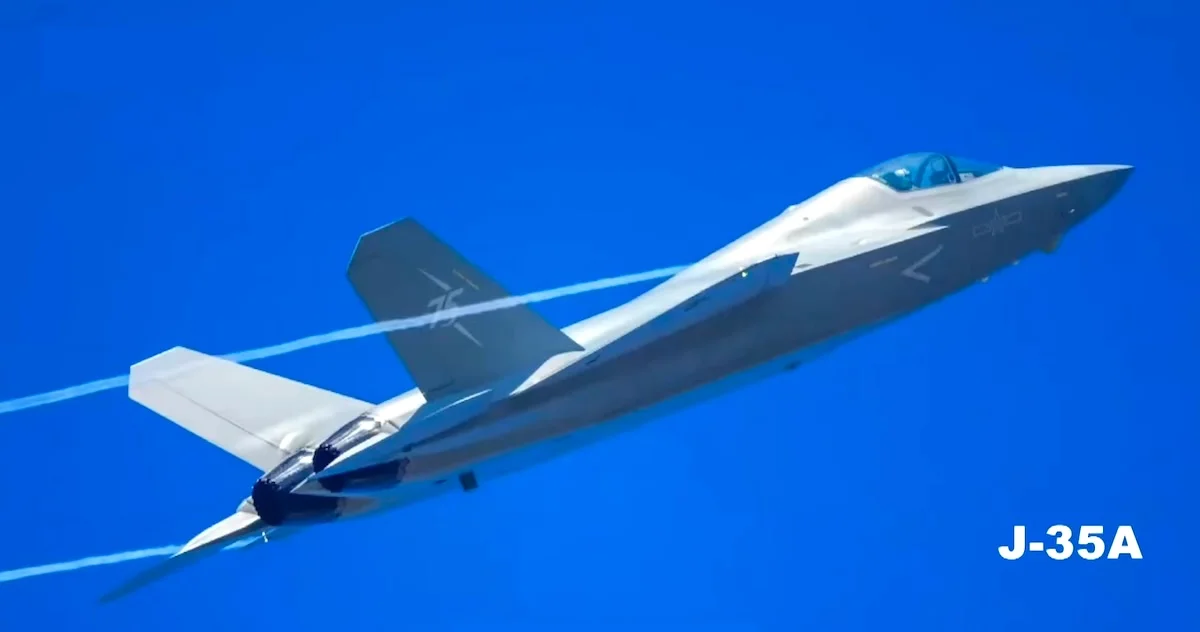
Country of Origin: China
Manufacturer: Shenyang Aircraft Corporation
Introduced in: 2021
Generation: 5th
Speed: Mach 1.8
Unit Cost: $70 – $85 million
Shenyang J-35 is China’s second fifth-generation stealth fighter designed for both carrier-based and land-based operations. Its development aligns with China’s broader ambitions to enhance blue-water naval aviation capabilities.
The aircraft features a stealth-optimized fuselage, radar-absorbent materials, internal weapons bays, and serrated panel designs to reduce radar cross-section (RCS). It is one of the very few fifth-generation fighters designed for naval operations.
The J-35 jets are being offered to allies and countries that can’t buy Western fifth-generation fighters, as a cheaper alternative to the F-35. Reports suggest that China is accelerating the transfer of J-35A units to Pakistan, potentially altering the regional power balance and expanding the aircraft’s operational footprint. [6]
11. HAL Tejas
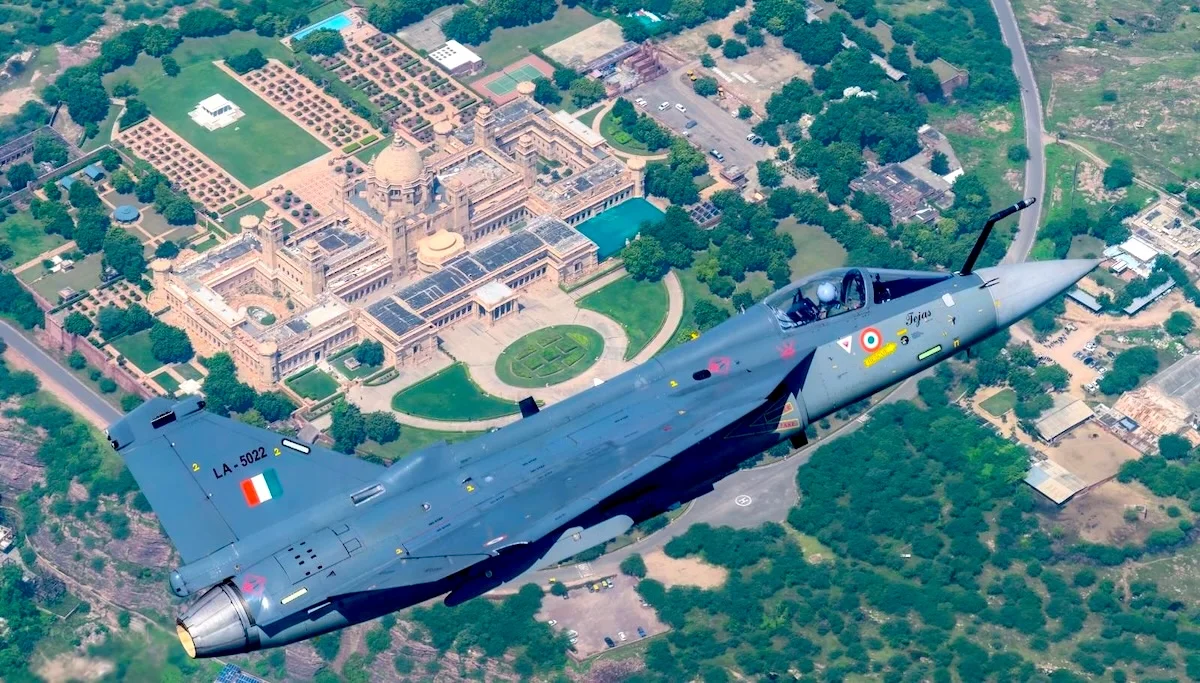
Country of Origin: India
Manufacturer: Hindustan Aeronautics Limited (HAL)
Introduced in: 2015
Generation: 4+ generation
Speed: Mach 1.8
Unit Cost: $50 million
After decades of development, the Tejas became operational in 2016, representing a significant milestone for India’s aerospace and defense ambitions — being the smallest and lightest supersonic fighter in its class, yet fully capable of handling modern air combat missions.
The Tejas uses lightweight composite materials, advanced electronics, a digital fly-by-wire system, multi-mode radar, and precision weapons. This makes it a flexible jet that can handle air-to-air combat, ground attacks, and reconnaissance missions.
The aircraft is developed for high agility, with a delta wing and relaxed static stability, enabling fast response and tight turns in dogfights. It has one of the lowest radar cross-sections among non-stealth aircraft in its category.
What makes the Tejas stand out is how cost-effective it is. It has a flyaway cost of around $50 million and much lower operating costs per hour compared to most 4.5-generation fighters. This makes it ideal for regular patrols, quick missions, and easy mass production. [7]
10. Boeing F-15EX Eagle II
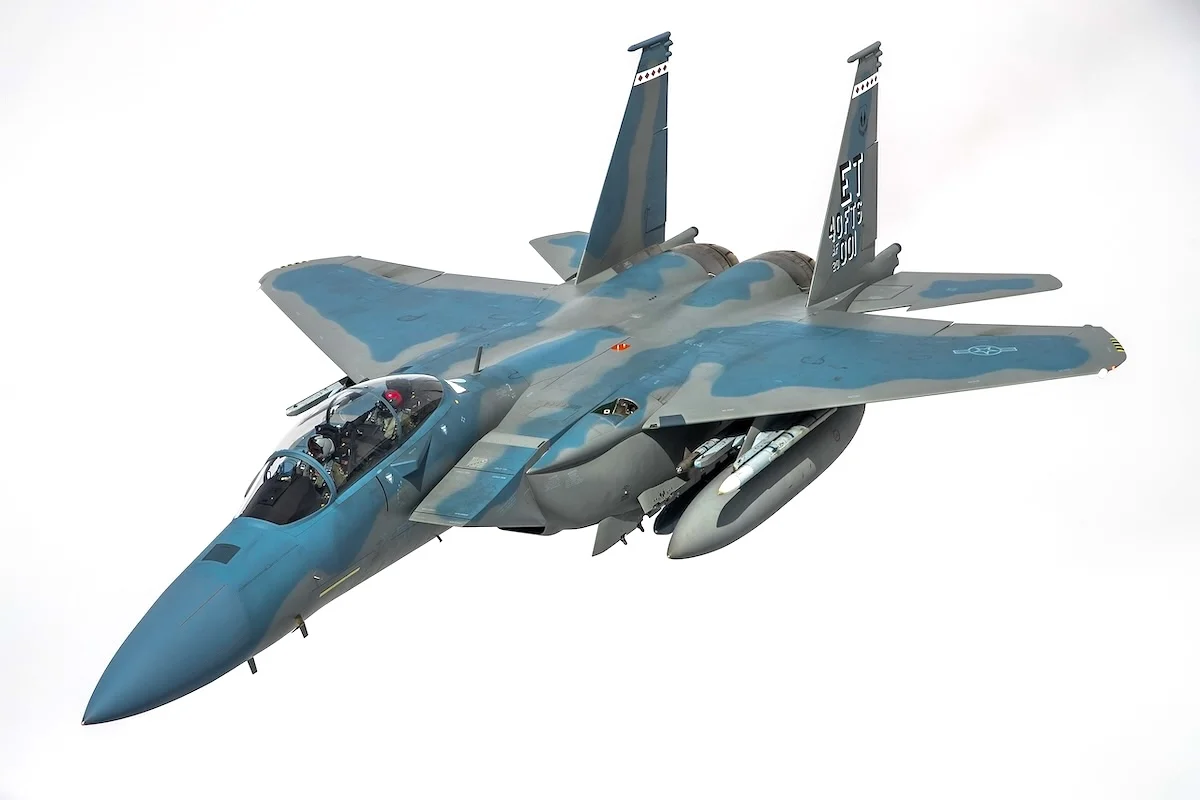
Country of Origin: United States
Manufacturer: Boeing Defense, Space & Security
Introduced in: 2024
Generation: 4++ generation
Speed: Mach 2.5
Unit Cost: $100 – $130 million
The F-15EX Eagle II is the most advanced iteration of the iconic F-15 family. Built on the proven airframe of the original F-15, it incorporates state-of-the-art avionics, digital infrastructure, weapons capacity, and survivability enhancements.
The aircraft can carry up to 13,380 kilograms of weapons, more than any other US fighter. It can fly in both contested and permissive environments, serving as a powerful platform for hypersonic missile delivery, battlefield command and control, and homeland defense. [8]
Even though the F-15EX isn’t a stealth jet, its high speed, advanced sensors, and large weapon capacity make it an important part of the US Air Force’s strategy. It can integrate seamlessly into joint operations and complement fifth-generation fighters like the F-22 Raptor and F-35 Lightning II.
9. Mikoyan MiG-35
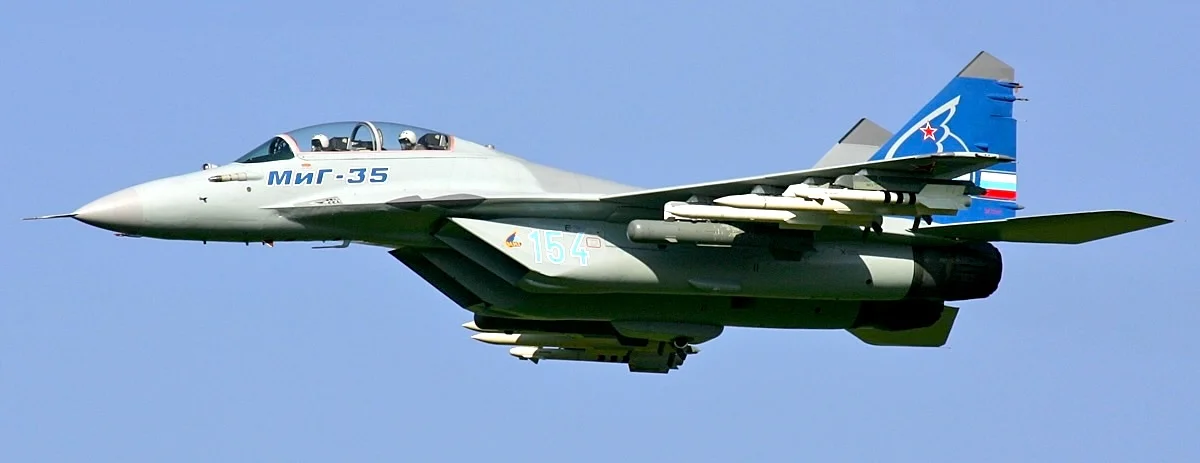
Country of Origin: Russia
Manufacturer: United Aircraft Corporation
Introduced in: 2019
Generation: 4++ generation
Speed: Mach 2.25
Unit Cost: $40 – $50 million
The MiG-35 is the most advanced version of the well-known MiG-29 series. It’s designed to upgrade Russia’s light fighter fleet with a modern, affordable, and export-friendly 4++ generation jet.
The MiG-35 features a Phazotron Zhuk-AE AESA radar, a state-of-the-art electro-optical sensor, and improved RD-33MK engines, each producing 9,000 kgf (kilogram-force) of thrust. [9]
These engines feature smokeless combustion and reduced infrared visibility, enhancing the aircraft’s survivability against heat-seeking missiles. Plus, these engines can be equipped with thrust vectoring nozzles, significantly improving the aircraft’s maneuverability and agility in dogfight scenarios.
Unlike heavyweight fighters like the Su-35, the MiG-35 is a lightweight, agile platform optimized for cost-effective operations and deployment flexibility, especially in contested or rugged environments.
Its increased payload capacity, digital fly-by-wire system, and modular architecture enable the integration of both Russian and foreign weapons and sensor systems. The MiG-35 is also one of the first Russian fighters to introduce fully digital glass cockpits, making it suitable for export markets with NATO interoperability requirements.
8. JAS 39E Gripen NG
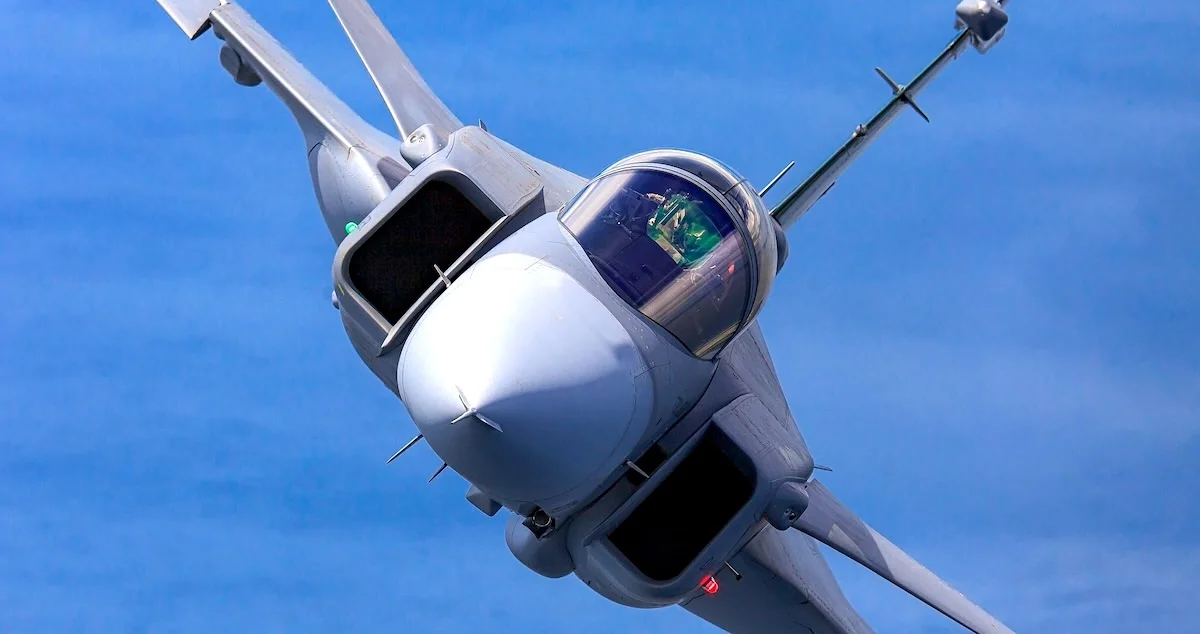
Country of Origin: Sweden
Manufacturer: Saab AB
Introduced in: 2019
Generation: 4.5 generation
Speed: Mach 1.9
Unit Cost: $85 million
The JAS 39E Gripen Gripen Next Generation (NG) is a state-of-the-art multirole fighter jet built upon the legacy of the earlier Gripen C/D models. It incorporates substantial advancements in avionics, propulsion, and weapon systems to meet the evolving demands of modern aerial warfare.
What sets this jet apart is its balance between cost-efficiency and high performance. It is engineered with low operating costs, ease of maintenance, and modular upgrades in mind. In fact, it is one of the most economical yet capable fighter jets in the world today.
The aircraft can operate from short, remote runways and turnaround in under 10 minutes, making it ideal for nations with limited airbase infrastructure or decentralized defense doctrines.
While not a stealth fighter in the traditional sense, the Gripen E offers a low radar cross-section and advanced electronic warfare systems, granting high survivability in contested environments.
Several countries, including Colombia and Brazil, have selected the Saab JAS 39E/F Gripen as their next-generation combat aircraft. Brazil plans to expand its Gripen fleet by 25%, reflecting continued confidence in the platform’s capabilities. [10]
7. F/A-18E/F Super Hornet
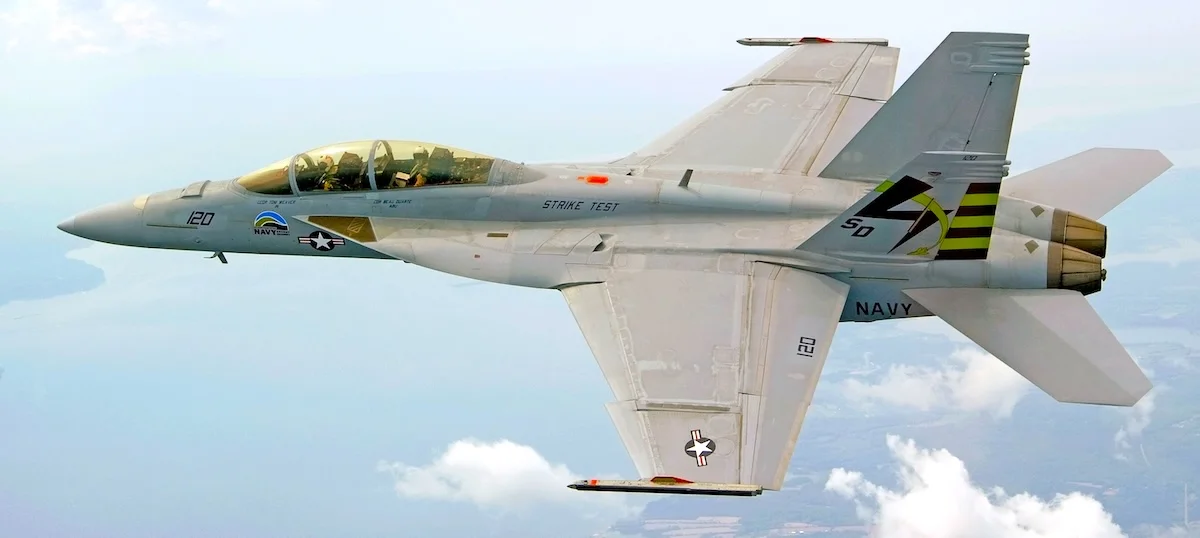
Country of Origin: United States
Manufacturer: Boeing Defense, Space & Security
Introduced in: 2001
Generation: 4.5 generation
Speed: Mach 1.6
Unit Cost: $66 – $75 million
The Super Hornet is a key part of the US Navy’s air power. It operates from aircraft carriers worldwide and handles many missions, such as gaining control of the skies, attacking targets, disabling enemy air defenses, conducting electronic warfare, and gathering intelligence.
It comes in two variants: the single-seat F/A-18E and the tandem-seat F/A-18F, both capable of carrying out complex missions in high-threat environments. Both include APG-79 AESA radar, Joint Helmet-Mounted Cueing System, Integrated Defensive Electronic Countermeasures, and Link-16 datalink for real-time battlefield data sharing.
These jets have been used in major combat operations, including Operation Iraqi Freedom, Operation Enduring Freedom, and Operation Inherent Resolve.
Over the years, the Super Hornet has been continually upgraded, including the latest Block III variant, which features stealth improvements, networked battlespace capabilities, and a conformal fuel tank system for extended range. Thanks to these improvements, the Super Hornet will continue to work effectively with newer jets like the F-35C well into the 2030s.
6. Eurofighter Typhoon
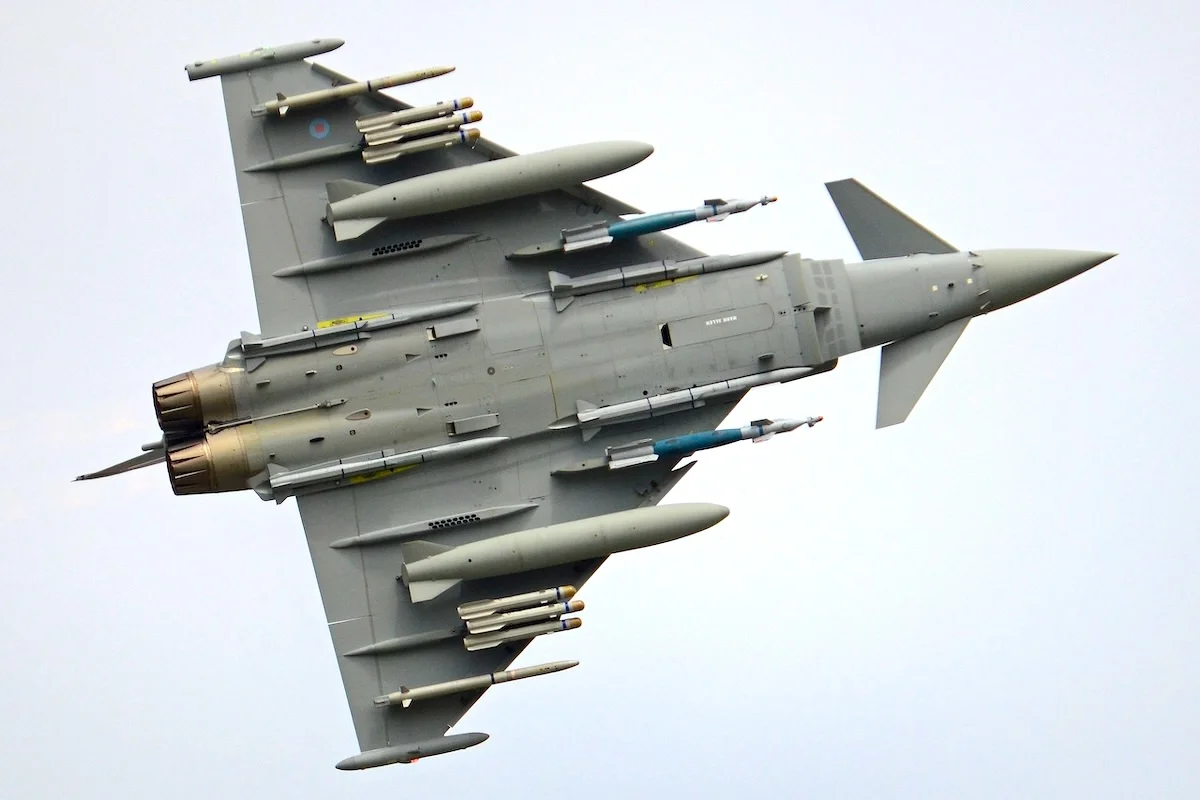
Country of Origin: UK, Germany, Italy, Spain
Manufacturer: Eurofighter GmbH
Introduced in: 2003
Generation: 4.5 generation
Speed: Mach 2
Unit Cost: $90 – $125 million
The Eurofighter Typhoon is a twin-engine, canard–delta wing, multirole fighter developed for air superiority and precision strike. It can perform air-to-air combat, air-to-ground strikes, and reconnaissance missions.
It can carry a broad range of weapons, including beyond-visual-range air-to-air missiles, precision-guided munitions, and anti-ship missiles, across its 13 hardpoints.
The aircraft is powered by two Eurojet EJ200 afterburning turbofan engines, each producing up to 90 kN of thrust with afterburner. These engines offer a high thrust-to-weight ratio, contributing to the aircraft’s impressive acceleration and climb performance.
Typhoon incorporates fly-by-wire control, sensor fusion, and advanced electronic warfare systems, though it does not feature full stealth. Its core strength lies in extreme agility, supercruise capability, and multinational compatibility, making it a backbone for NATO air defense. [11]
5. Dassault Rafale
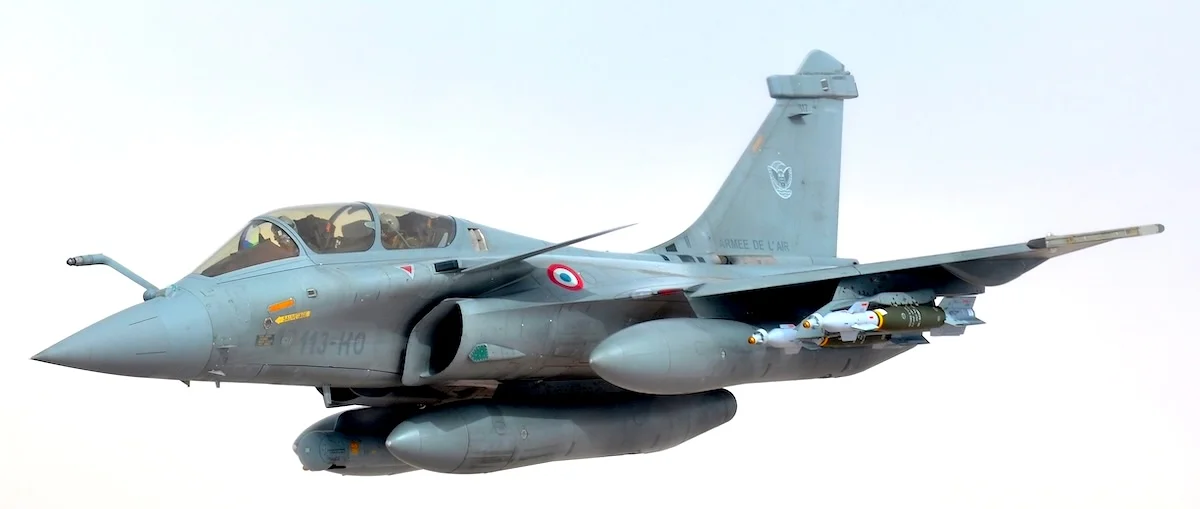
Country of Origin: France
Manufacturer: Dassault Aviation
Introduced in: 2001
Generation: 4.5 generation
Speed: Mach 1.8
Unit Cost: $100 – $115 million
The Dassault Rafale, meaning “gust of wind” in French, is a twin-engine, multirole fighter jet. Powered by two Snecma M88 engines, the jet can reach speeds up to Mach 1.8 and operate at altitudes up to 50,000 feet.
Although the Rafale belongs to the “4.5-generation” category, it integrates many technologies typically found in fifth-generation aircraft, particularly in avionics, electronic warfare, and sensor fusion.
The jet can carry a range of weapons, including air-to-air missiles like the Meteor, air-to-ground missiles like the SCALP, laser-guided bombs, and even nuclear weapons. It can carry up to 9.5 tons of external weapons and equipment.
The Rafale has seen extensive operational use in Afghanistan, Iraq, and Syria, and it is often praised for its combat readiness, survivability in contested airspace, and precision strike capabilities.
The aircraft has been a major export success for France, with countries like Egypt, India, Qatar, Greece, Indonesia, and the UAE buying it. The UAE placed an order for 80 Rafale F4 jets, which is the biggest export deal in the company’s history. [12]
4. Chengdu J-20 Mighty Dragon
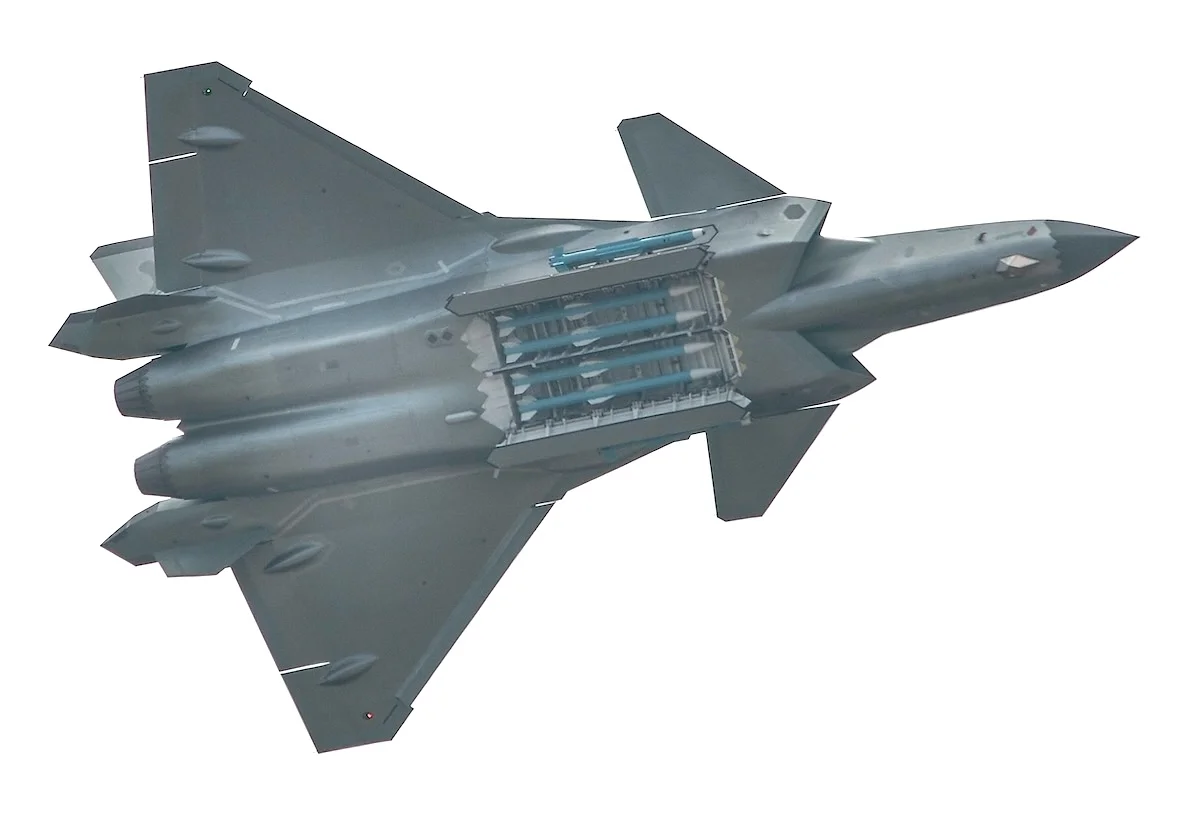
Country of Origin: China
Manufacturer: Chengdu Aircraft Corporation
Introduced in: 2017
Generation: 5th
Speed: Mach 2
Unit Cost: $110 million
Chengdu J-20 is China’s premier fifth-generation stealth fighter with a combat radius of approximately 2,000 kilometers. It is China’s most advanced fighter jet and represents the country’s goal to compete with US air power in the Indo-Pacific region.
Unlike the F-22, the J-20 prioritizes range, payload capacity, and networked sensor integration over extreme maneuverability, and it’s equipped with highly advanced avionics, AESA radar systems, and long-range air-to-air missile capabilities.
Since it is equipped with Type 1475 AESA radar and electro-optical targeting systems, it can operate effectively in heavily contested or denied environments.
China is also expanding the J-20’s role within its integrated air defense and strike networks, especially near Taiwan, the South China Sea, and the East China Sea. [13]
3. Su-57 Felon
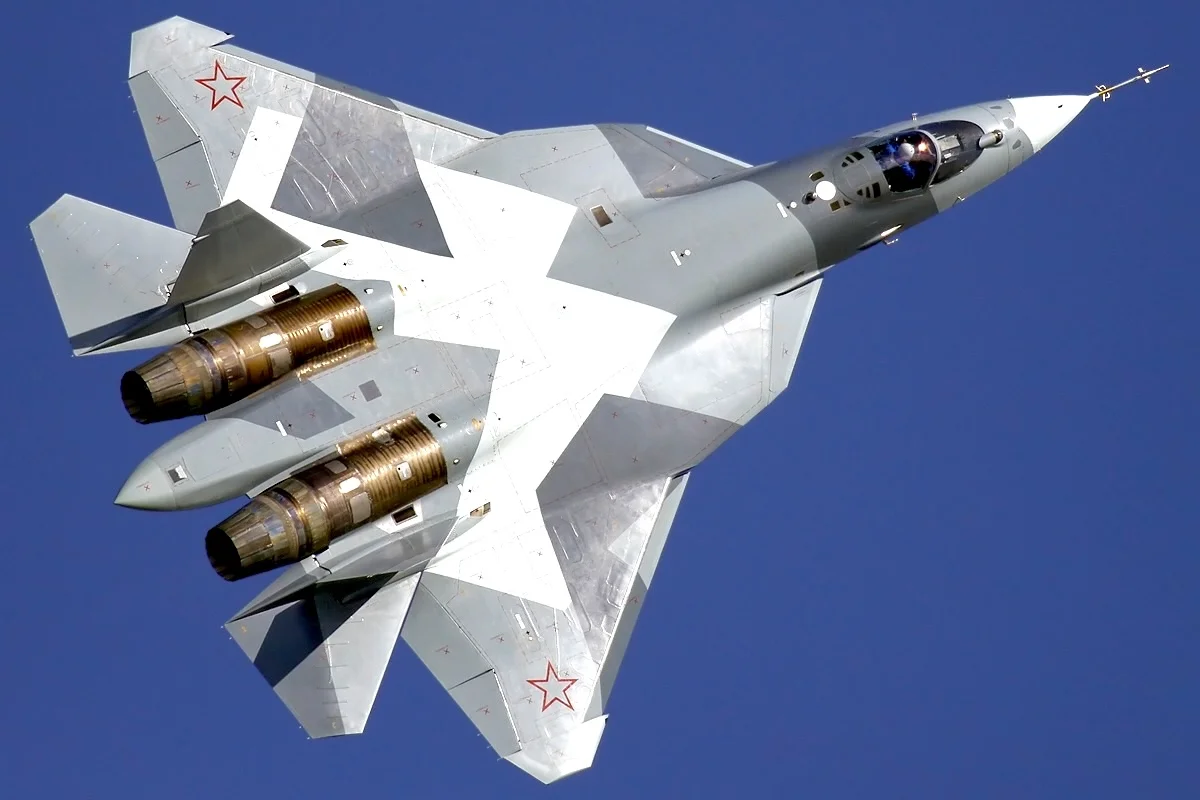
Country of Origin: Russia
Manufacturer: United Aircraft Corporation
Introduced in: 2020
Generation: 5th
Speed: Mach 2
Unit Cost: $35 – $50 million
The Sukhoi Su-57 is Russia’s first operational fifth-generation multirole stealth fighter. It is developed to perform both air superiority and strike missions, and to eventually replace legacy fighters such as the MiG-29 and Su-27.
Unlike its American counterparts, the Su-57 emphasizes kinetic dogfighting agility, with full 3D thrust vectoring, a high internal fuel load for long-range missions, and internal weapons bays for low radar visibility.
The jet has several advanced technologies, including L-band radar arrays in the wings for detecting stealth aircraft, electro-optical targeting systems, and AI-assisted pilot decision tools.
Its current engines are upgraded versions of the AL-41F1 (used in Su-35), but upcoming production aircraft are expected to use the Izdeliye 30 engine, providing true fifth-gen performance with better thrust-to-weight and fuel efficiency. [14]
2. F-22 Raptor
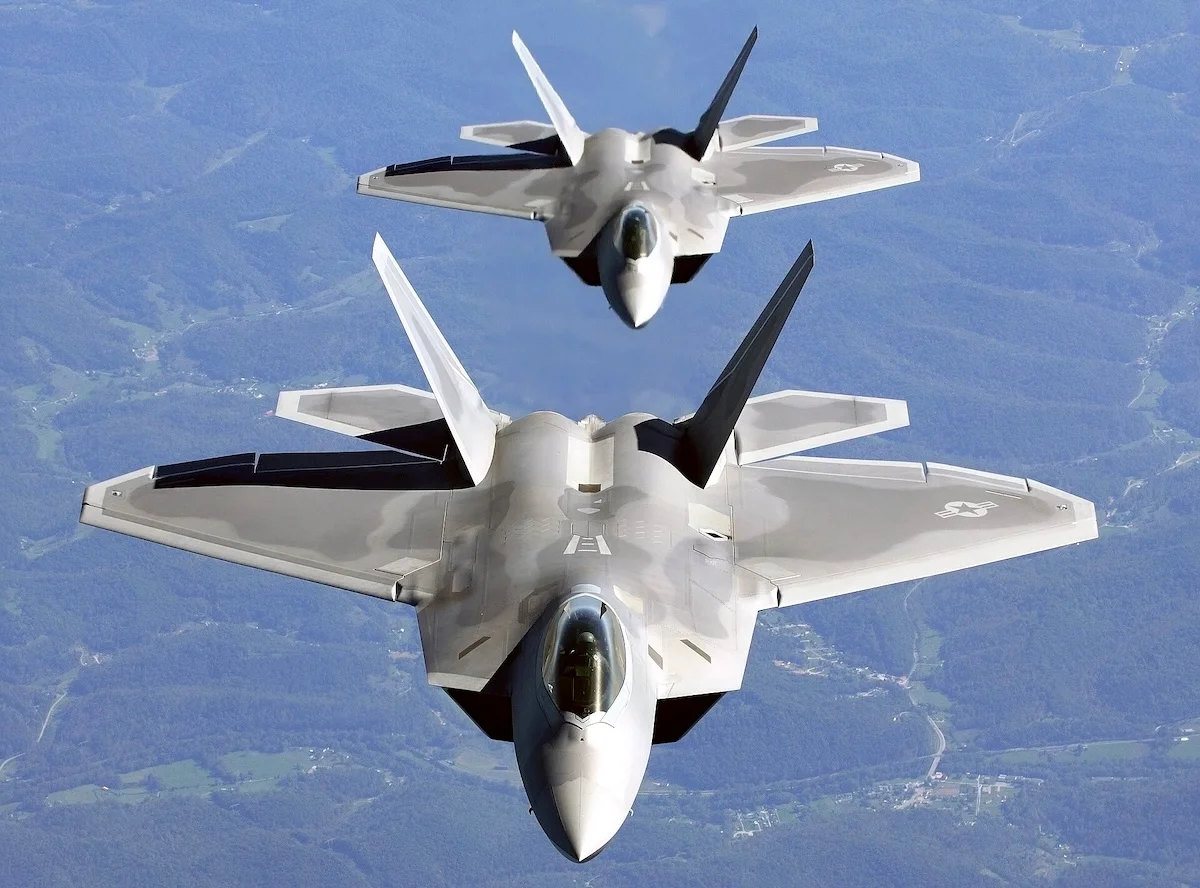
Country of Origin: United States
Manufacturer: Lockheed Martin
Introduced in: 2005
Generation: 5th
Speed: Mach 2.25
Unit Cost: $140 – $150 million
The F-22 Raptor, developed by Lockheed Martin in partnership with Boeing, is the world’s first operational fifth-generation fighter aircraft. It uses two Pratt & Whitney F119-PW-100 engines and can fly at supersonic speeds for long periods without needing afterburners.
Its revolutionary combination of stealth, supercruise, extreme agility, and advanced avionics made it unmatched for over a decade. At a time when radar-evading aircraft were limited to ground attack roles (such as the F-117), the F-22 emerged as a true stealth air-to-air hunter with the ability to penetrate heavily defended airspace.
Despite its superiority, the F-22 program was capped at only 187 operational aircraft due to high costs and post–Cold War strategic shifts. Congress also banned F-22 exports, making the US Air Force the only operator.
While the F-22 is no longer in production, it actively receives incremental upgrades to remain relevant. For instance, in 2024, the US Air Force awarded Raytheon a $1 billion contract to upgrade the F-22’s sensors, including integrating advanced infrared search and track (IRST) systems. These upgrades aim to enhance the aircraft’s ability to detect and engage stealthy adversaries without relying solely on radar. [15]
1. F-35 Lightning II
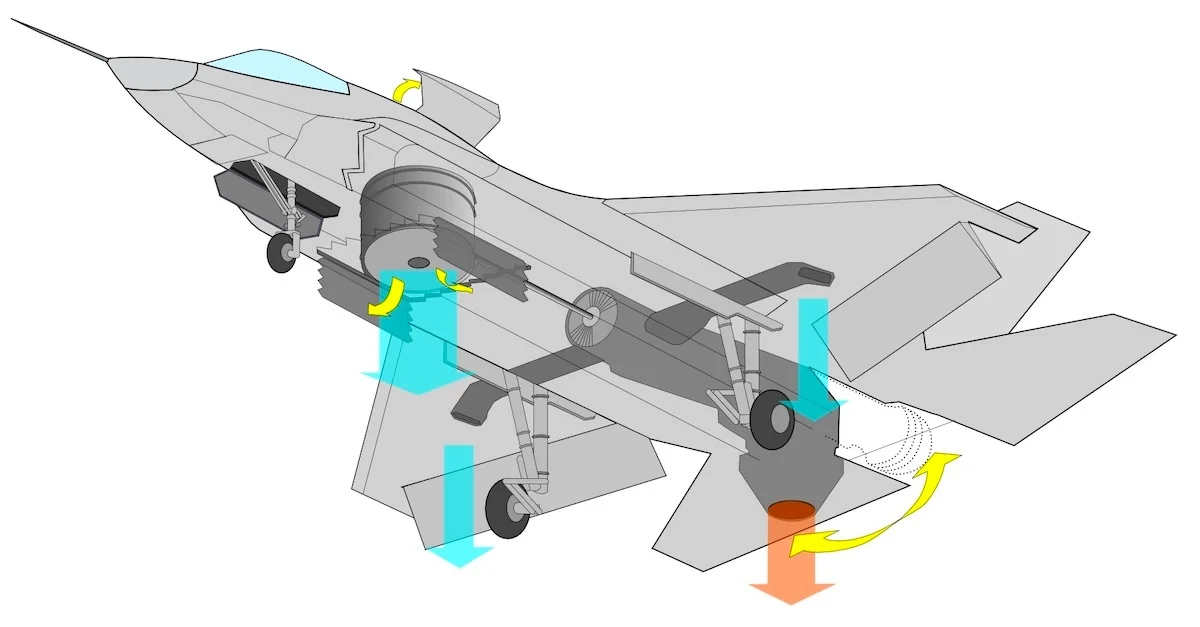
Country of Origin: United States
Manufacturer: Lockheed Martin
Introduced in: 2015
Generation: 5th
Speed: Mach 1.6
Unit Cost: $80 – $100 million
The F-35 Lightning II, designed under the Joint Strike Fighter program, is widely regarded as the most advanced multirole combat aircraft in service today. It has three distinct variants that cater to different branches of the US military and allied forces:
- The F-35A (conventional takeoff and landing)
- The F-35B (short takeoff and vertical landing)
- F-35C (carrier-based variant with larger wings and reinforced landing gear)
The F-35’s design minimizes its radar cross-section, allowing it to penetrate advanced air defenses. Its internal weapons bays allow it to carry various munitions while maintaining stealth. However, its core strength lies in its revolutionary “sensor fusion” architecture.
The F-35’s onboard systems gather massive volumes of data from its radar, sensors, and electronic warfare systems and present a unified picture to the pilot through an advanced helmet-mounted display system (HMDS). This helmet, valued at over $400,000, provides a 360-degree view with real-time battlefield data, targeting, and even night vision, eliminating the need for a traditional heads-up display.
Read More
Sources Cited and Additional References- World News, F-35 fighter has high maintenance cost, NDTV
- Stephen Losey, Boeing wins contract for NGAD fighter jet, dubbed F-47, Defense News
- Defense Platforms, Military aircraft market size and trend analysis, Fortune Business Insights
- Bruno Teles, Japan revolutionizes air power and begins construction of Mitsubishi’s FX fighters, CPG
- Peter Suciu, The B-2 Spirit bomber is the most expensive aircraft ever, The National Interest
- News, China accelerates J-35A transfer to Pakistan, Defence Security Asia
- Kalyan Ray, HAL to supply 180 LCA Tejas Mk1A by 2031-32, Deccan Herald
- Sumit Ahlawat, Zero losses & stunning 83% mission-capable rate, EurAsian Times
- Boyko Nikolov, Russia’s MiG-35 4++ fighter tested in real combat, Bulgarian Military
- Gabriel Araujo, Brazil plans to buy more Saab fighters, Reuters
- Defence, The Eurofighter’s role in defence, industry and sovereignty, Airbus
- News, UAE MoD unveils first French Rafale jet, Airforce Technology
- News, New Chinese fighter brigade deploys stealth fighters across from Taiwan, Military Watch Magazine
- Thomas Newdick, Su-57 Felon’s two-dimensional thrust-vectoring engine nozzle breaks cover, TWZ
- Parth Satam, US Air Force awards RTX $1 billion contract to upgrade F-22 sensors, The Aviationist

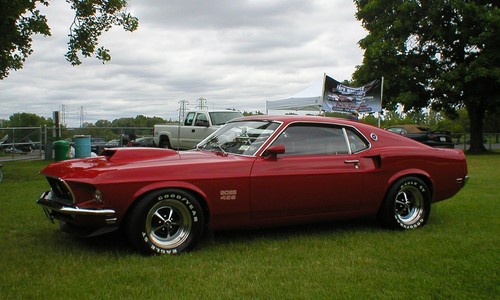

Totally wrong.
Rafale is much superior to Mirage 2000
Rafale and Mirage2000 shall be interchanged.
There is something insane about making all of these high costs fighter defense / attack jets !
Uhhhhh “something”? Can you be more specific?